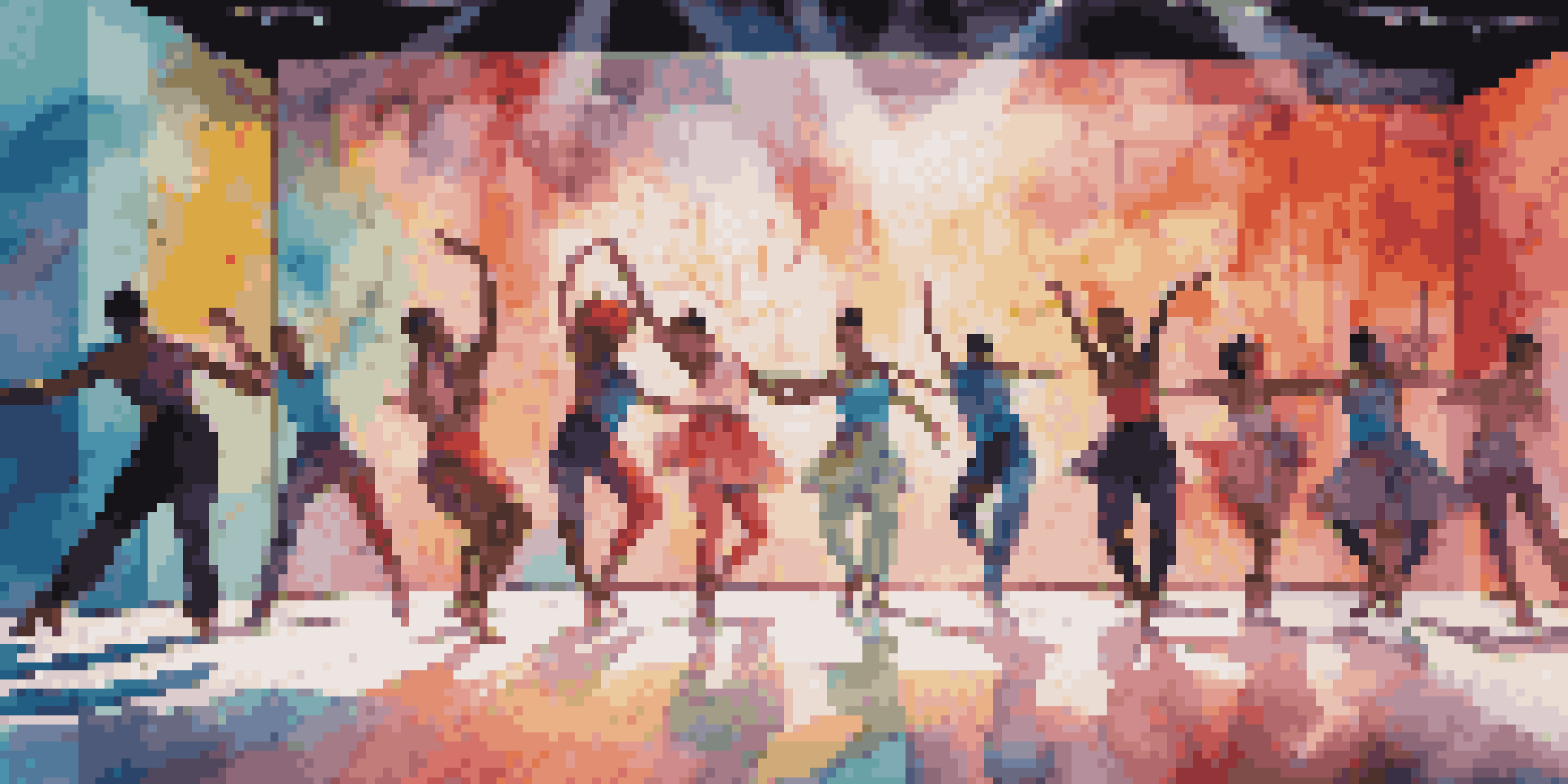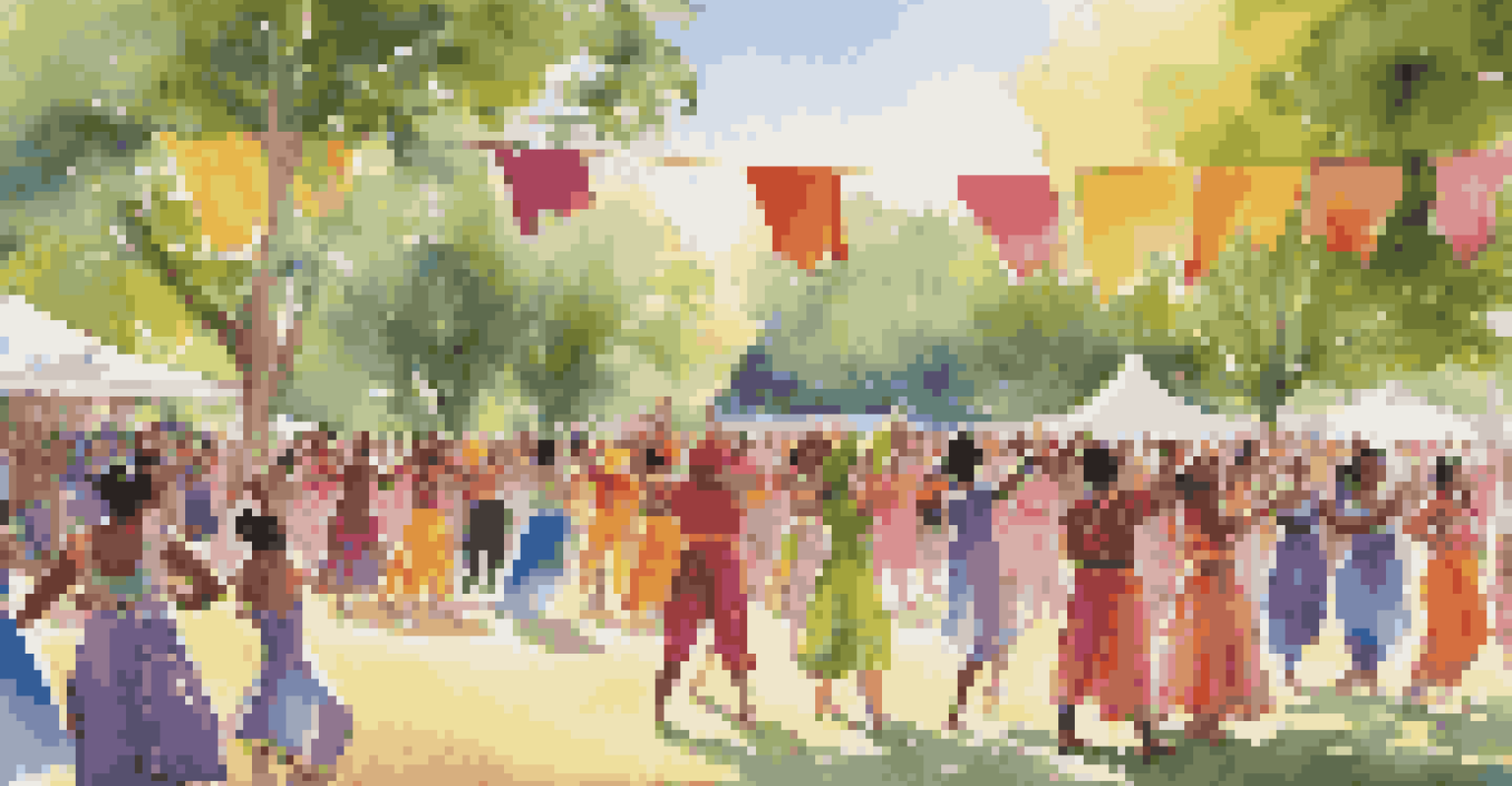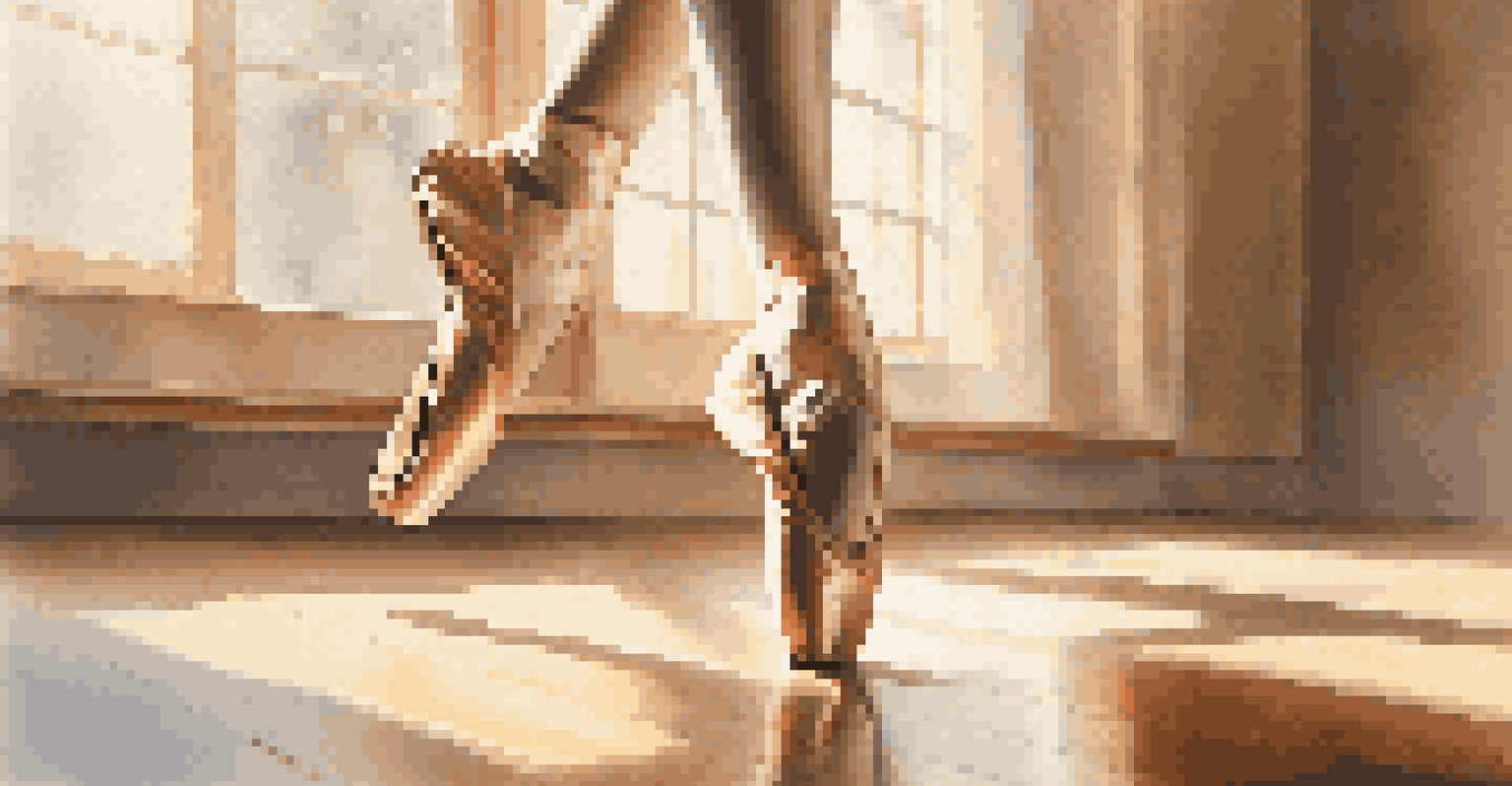Innovative Dance Collaborations: Pushing the Boundaries of Art

The Evolution of Dance Collaborations in Art
Dance has always been a form of expression, but recent collaborations are pushing the boundaries of traditional art. Artists from various disciplines are coming together to create performances that blend dance with visual art, music, and technology. This evolution reflects a broader trend in the art world, where interdisciplinary approaches are becoming increasingly popular.
Dance is the hidden language of the soul.
For instance, choreographers now often work alongside digital artists to create immersive experiences that captivate audiences. These collaborations not only enhance the storytelling aspect of dance but also open up new avenues of creativity. With each partnership, artists challenge the status quo, allowing for unique interpretations of movement and emotion.
As a result, we are witnessing performances that engage the senses in unprecedented ways. By breaking down the barriers between genres, these innovative collaborations are redefining what art can be, inviting audiences to experience dance in a whole new light.
Technology's Role in Dance Collaborations
In today's digital age, technology plays a pivotal role in shaping innovative dance collaborations. From virtual reality to projection mapping, artists are utilizing cutting-edge tools to enhance their performances. This integration not only adds visual appeal but also allows for a deeper connection with the audience.

For example, some choreographers have employed motion capture technology to translate dancers' movements into digital animations. This creates a mesmerizing interplay between live performance and virtual elements, captivating viewers in ways that traditional dance alone cannot. Such technological advancements are revolutionizing the dance landscape.
Dance Meets Technology
Innovative dance collaborations are increasingly utilizing technology, such as virtual reality and motion capture, to create immersive performances that engage audiences in novel ways.
Moreover, technology facilitates collaboration across geographical boundaries. Artists from different parts of the world can now work together seamlessly, sharing ideas and concepts in real-time. This global connectivity enriches the dance community, fostering creativity that transcends cultural limitations.
Exploring Cultural Fusion Through Dance
Cultural fusion is another exciting aspect of innovative dance collaborations. As artists from diverse backgrounds come together, they bring unique perspectives and traditions that enrich their work. This blending of styles not only promotes inclusivity but also celebrates the beauty of diversity in the arts.
Art is not a thing; it is a way.
Take, for example, collaborations between ballet dancers and hip-hop artists. When these two distinct styles merge, the result is a fresh and exhilarating performance that challenges conventional perceptions of both genres. Such fusions create a dialogue between different cultures, fostering understanding and appreciation.
Ultimately, cultural fusion in dance collaborations showcases the power of artistic expression to unite people. By highlighting the similarities and differences in movement styles, these performances encourage audiences to embrace a more global perspective on art.
The Impact of Collaborative Choreography
Collaborative choreography is a game-changer in the dance world, allowing for richer storytelling and more dynamic performances. When multiple choreographers contribute to a piece, the result is often a multi-layered narrative that captivates the audience. This collaborative approach fosters creativity and encourages experimentation.
For instance, works that feature a blend of different choreographic styles can create a more engaging experience. Audiences are often drawn into the emotional depth that arises from diverse movement vocabularies. This fusion of ideas not only enhances the performance but also pushes dancers to expand their technical skills.
Cultural Fusion in Dance
Collaborations between artists from diverse backgrounds promote inclusivity and celebrate cultural diversity, resulting in unique performances that challenge traditional perceptions of dance.
Moreover, collaborative choreography can lead to innovative techniques and methods that redefine traditional practices. By learning from one another, choreographers can develop new movement styles that resonate with contemporary audiences, ultimately enriching the art form as a whole.
Community Engagement Through Dance Collaborations
Innovative dance collaborations extend beyond the stage, fostering community engagement and participation. Many artists are now creating projects that involve local communities, inviting them to contribute their stories and experiences. This approach not only democratizes art but also builds stronger connections between artists and their audiences.
For example, community-based dance projects often culminate in performances that showcase the talents of local participants. These events not only celebrate individual creativity but also highlight the collective spirit of the community. Such collaborations empower individuals and encourage them to express themselves through dance.
Furthermore, engaging the community in the creative process can lead to fresh ideas and perspectives. By incorporating diverse voices, artists can craft performances that resonate more deeply with their audiences, making art a shared experience rather than a solitary one.
The Role of Festivals in Promoting Collaborations
Festivals play a significant role in promoting innovative dance collaborations, providing platforms for artists to showcase their work. These events often feature a diverse range of performances that highlight the creativity emerging from collaborative efforts. Festivals not only celebrate dance but also foster a sense of community among artists and audiences.
For instance, many dance festivals now include workshops and panels that encourage collaboration and dialogue among participants. By creating spaces for artists to connect, these events inspire new partnerships and creative ideas. The energy and excitement of festivals can often lead to spontaneous collaborations that result in remarkable performances.
Community Engagement Through Dance
Innovative dance projects are fostering community engagement by involving local participants, allowing art to become a shared experience that empowers individuals.
Moreover, festivals serve as a bridge between established artists and emerging talent. By spotlighting innovative collaborations, they help to cultivate the next generation of dancers and choreographers, ensuring that the art form continues to evolve and thrive.
The Future of Dance Collaborations
As we look to the future, it's clear that innovative dance collaborations will continue to shape the art landscape. With advancements in technology and an increasing emphasis on interdisciplinary approaches, the possibilities for creative expression are limitless. Artists will keep exploring new ways to connect, challenge, and inspire through their work.
Moreover, as global connectivity grows, we can expect to see even more cultural exchanges and collaborations. This will not only enhance the richness of dance but also promote understanding and appreciation across different cultures. The future of dance is not just about movement; it's about building bridges between communities.

Ultimately, the evolution of dance collaborations reflects the dynamic nature of art itself. As artists push boundaries and redefine what is possible, audiences will be invited to join them on this exciting journey, discovering the transformative power of dance along the way.